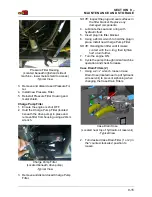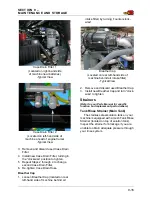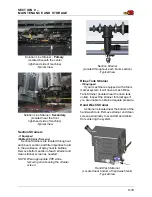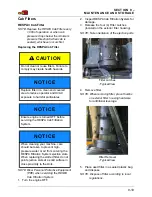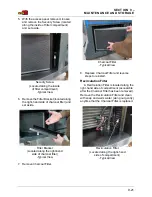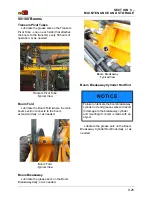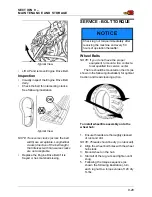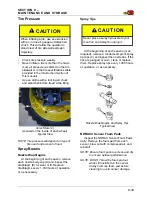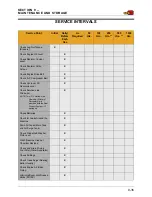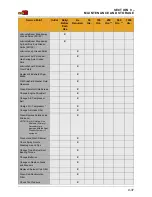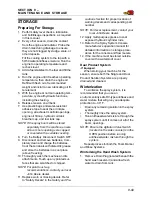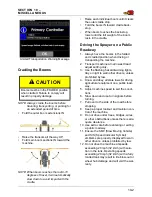
9-29
SECTION 9 –
MAINTENANCE AND STORAGE
NOTE: Use slow, even pressure on the
torque wrench. Quick or jerky
movements can cause inaccurate
values.
6. Repeat the same sequence to 150 dry
ft.-lbs. and again to 400-500 dry ft.-lbs.
NOTE: If the wheel turns during lug nut
torquing, lower machine to the
ground - just enough for the tire to
touch and prevent rotation. Or, more
preferably, place a suitable wedge
between the tire and the ground.
Lower the machine and resume
operation. Recheck torque after 30
minutes of operation.
7. When torquing is complete, lubricate
exposed threads with anti-seize com-
pound.
Hydraulic Tread Adjust Machines
With the engine turned OFF, visually
inspect the tread bearing bolts on both the
bottom and side tread adjust bearing plates
daily. Inspect the torque every 100 hours of
operation.
To check torque of the tread adjust
bearing bolts:
1. Loosen the jam nut on each tread adjust
bearing bolt.
2. Using an “X” pattern (as shown in the fol-
lowing photo), verify that the current
torque on each tread adjust bearing bolt
is equivalent to the last inspection from
100 hours of previous operation.
3. Repeat pattern 3 to 4 times until the last
sequence shows no movement of the
bolts to achieve desired torque.
4. Tighten jam nut.
Typically, a torque value of 20 to 25 ft.-lbs.
is required to stabilize the axle and still allow
tread width adjustment.
NOTE: Never operate machine with loose or
missing tread plates. To visually
inspect for loose tread plates, slowly
rock the machine forward and
backwards while observing the legs
Torque Sequence
Jam Nut
(Located on each tread adjust bearing bolt)
-Typical View
“X” Pattern
-Typical View

